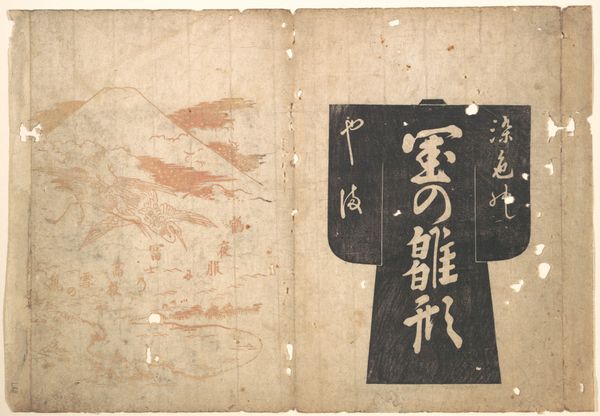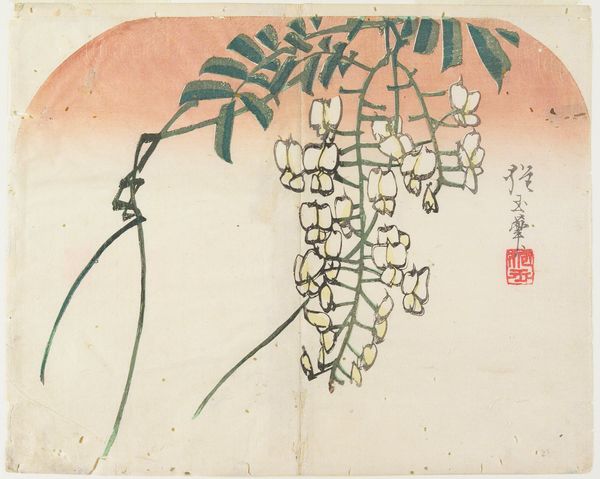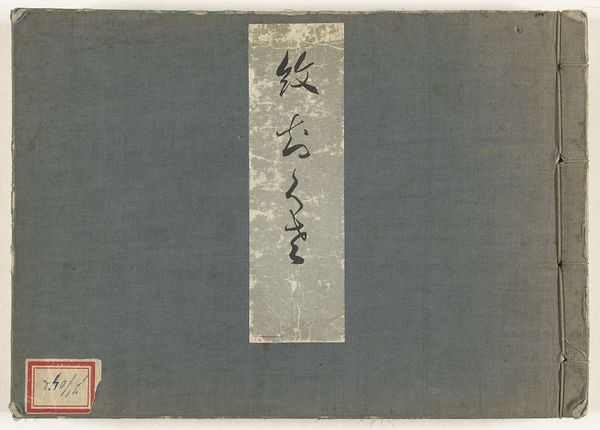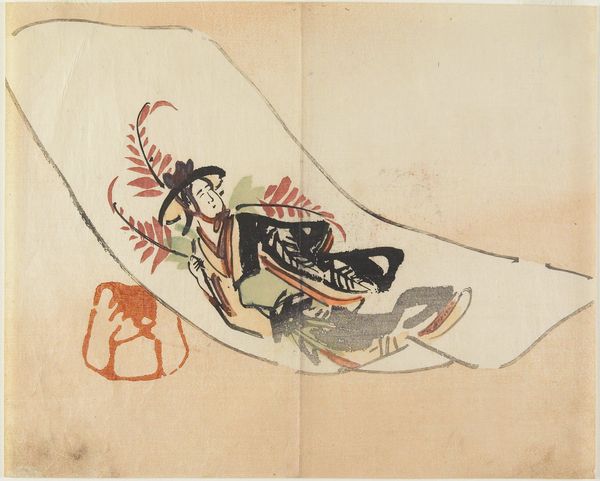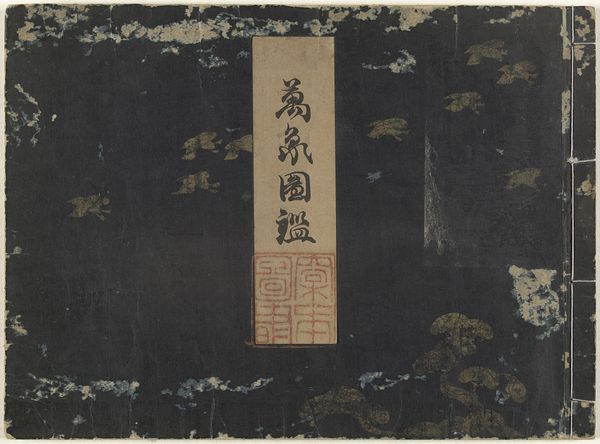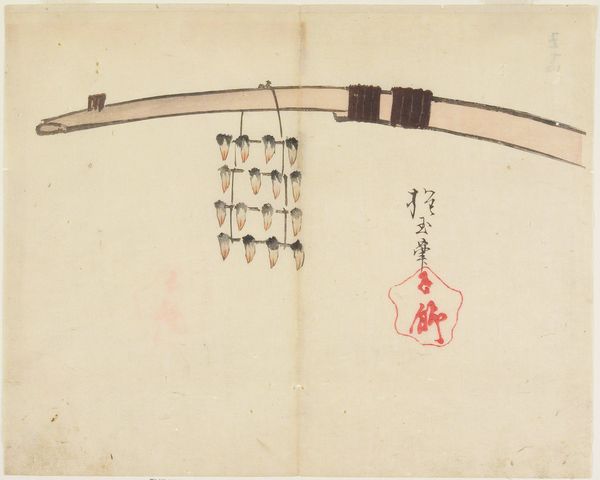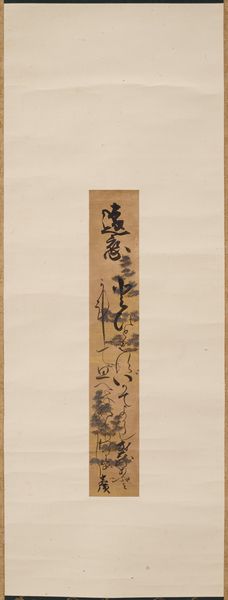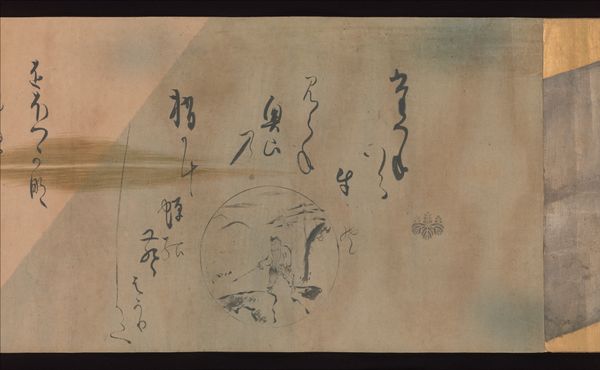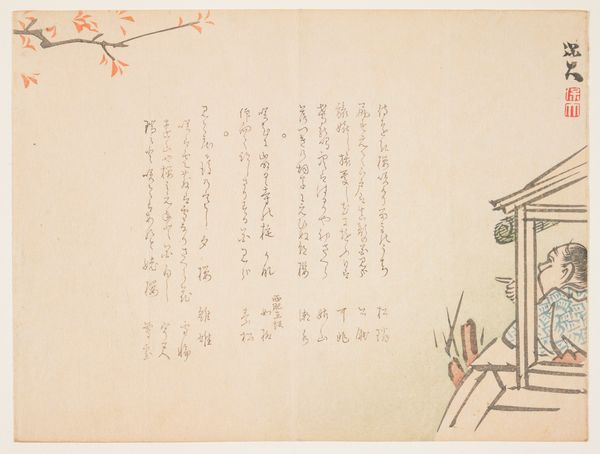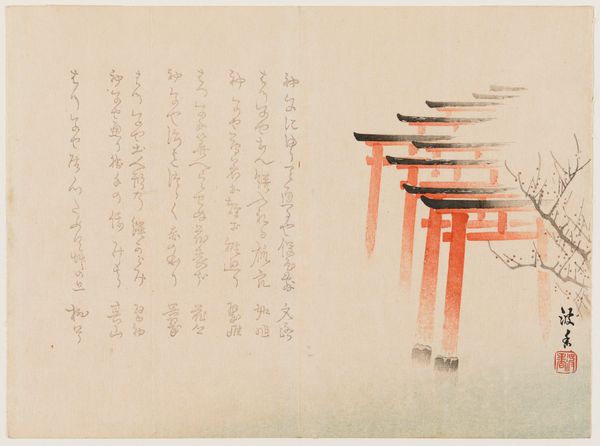
print, paper, ink, woodblock-print
# print
#
asian-art
#
ukiyo-e
#
japan
#
paper
#
personal sketchbook
#
ink
#
coloured pencil
#
woodblock-print
Dimensions: 9 3/16 × 11 9/16 in. (23.3 × 29.3 cm) (image, sheet, uchiwa-e)
Copyright: Public Domain
Editor: Here we have "Log Used to Strike Temple Bells," a woodblock print made with ink and colored pencil on paper, dating back to the 1830s by Yamada Hōgyoku. The bluntness of the depicted instrument gives it a sort of solemn gravity. How do we unpack that culturally? Curator: Good question! Consider the public role of temples during the Edo period in Japan. Temples were central not just to spiritual life, but also to community governance, announcements, and even timekeeping. Editor: Like a civic center, of sorts? Curator: Precisely! A temple bell wouldn't just mark prayer times, but announce curfews or signal emergencies. This image, therefore, captures not just a religious object, but an object imbued with social and political weight. Do you notice the bold lines and almost crude rendering of the log? Editor: Yes, the heavy, dark ink is very striking against the muted background and defined square. Curator: Indeed. This could reflect a tension between the idealized image of the temple and the rough, everyday reality of its functioning. It raises questions about access, about who got to wield that log, about how power was communicated in society through images like these. What do you think the prominent signature suggests? Editor: Perhaps the artist wanted to make a statement, inserting their individual vision into the representation of this public instrument. Curator: Exactly. This tension – between public symbol and private interpretation – is, I think, key to understanding this piece and how it participated in the visual culture of the time. It offers us insight on socio-political dynamics. Editor: I see, the work's resonance grows deeper. Curator: The log moves from simply an instrument to a symbolic representation of power, authority, and even, perhaps, resistance through artistic re-interpretation. It’s more complex than it appears.
Comments
No comments
Be the first to comment and join the conversation on the ultimate creative platform.
